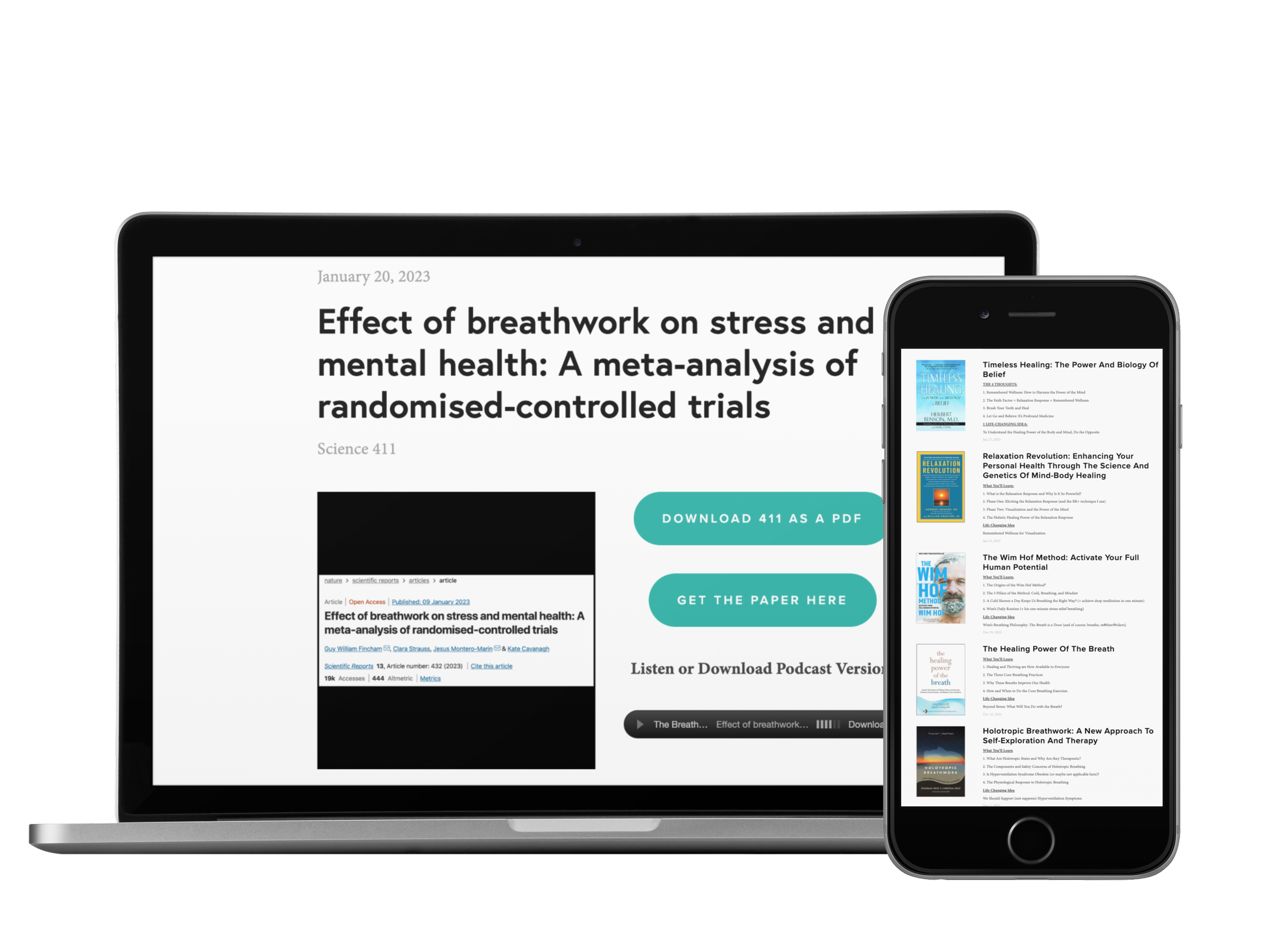Reading Time: 1 min 46 sec
I hope the next 21’ish breaths are the most nourishing of your day.
4 THOUGHTS
1. Breathing, and Energy in Motion
“So what can help us when rational thought can’t? In our cerebrally oriented life, many of us have forgotten one critical piece: the role of our body to help our mind. Because emotion is energy in motion, if we want to regain our ability to think clearly, it helps to process emotional energy through the body. And the fastest-acting way to do that is via breathing.”
– Emma Seppälä, Ph.D., Sovereign
“Emotion is energy in motion.” That’s so good (maybe we should spell it e-motion?). It’s a great reminder that emotions need movement and, perhaps unsurprisingly to us, that one of the best movements of all for processing them is breathing 👏
2. How We Know Slow Breathing Activates the Vagus Nerve
“The results of this study reveal that for participants at rest, respiration-driven changes in HRV power (RSA) are vagally mediated. … These findings raise the possibility that mind-body techniques that use slow breathing at rest exert their breathing-related relaxation effects through vagal mechanisms.”
I was revisiting this study while putting together a presentation and thought it was worth resharing. The researchers used medications to separately block the sympathetic and parasympathetic nervous systems, allowing them to isolate which branch was responsible for changes in HRV during slow breathing. It was a really neat study.
Here’s an Instagram post I made a couple years ago that summarizes its core methods and findings 🙏
3. Three Random Breathing Thoughts
Breath is both a miniature model of life and the whole of life itself.
Rather than measuring ourselves by how long we practice each day, maybe a more meaningful metric is how little we need to practice to maintain our mental and physical wellness.
The greatest skill in breathing (like in life) is knowing when to go with the flow—and when to deliberately change it.
4. Want to Go East?
“If you want to go east, don't go west.”
– Sri Ramakrishna
Just a perfect reminder that, to achieve our goals, it’s often the things we don’t do that set us in the right direction.
1 Quote
“Beyond the mountains, more mountains””
1 GOOD BOOK
Healing Through Breathing by Eddie Stern
This is a short, practical guide to the power of breathing for healing our bodies and minds. It blends science with ancient wisdom to offer plenty of simple yet powerful advice. It also includes guided breathing to get you started. Can’t recommend it enough. (Note: It is only on Audible.)
In good breath,
Nick Heath, T1D, PhD
“Breathing is the compound interest of health & wellness.”
Enjoy these posts? Donate to say thanks!
P.S. Apologies for my delayed response
The Breathing App for Diabetes
This is the first program specifically made for people with diabetes to help manage their stress through breathing and mindfulness practices. In addition to the amazing program inside the app, we have some really neat things coming up, so sign up now!
Amazon Associate Disclosure
I’ve been recommending books for almost 6 years. Yet somehow, I just discovered that I could be an Amazon affiliate [face-palm]. In any case better late than never. Now, any Amazon link you click is an affiliate link. As an Amazon Associate, I earn from qualifying purchases. So, if you’d like to support my work, buying books through these links is helpful : )
* An asterisk by a quote indicates that I listened to this book on Audible. Therefore, the quotation might not be correct, but is my best attempt at reproducing the punctuation based on the narrator’s pace, tone, and pauses.




